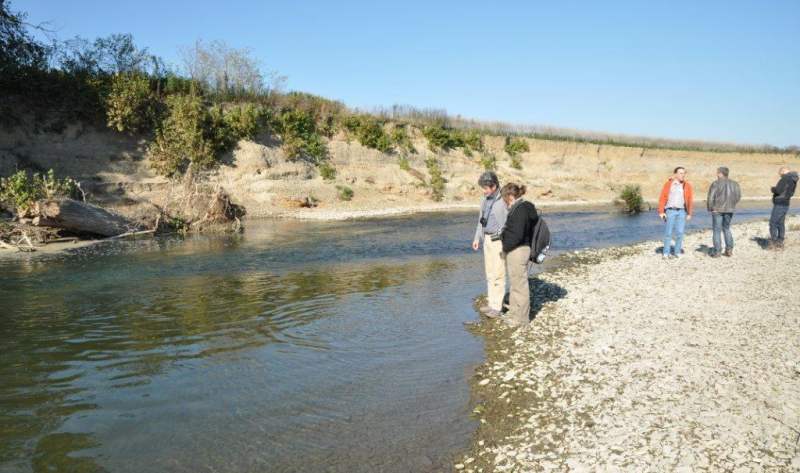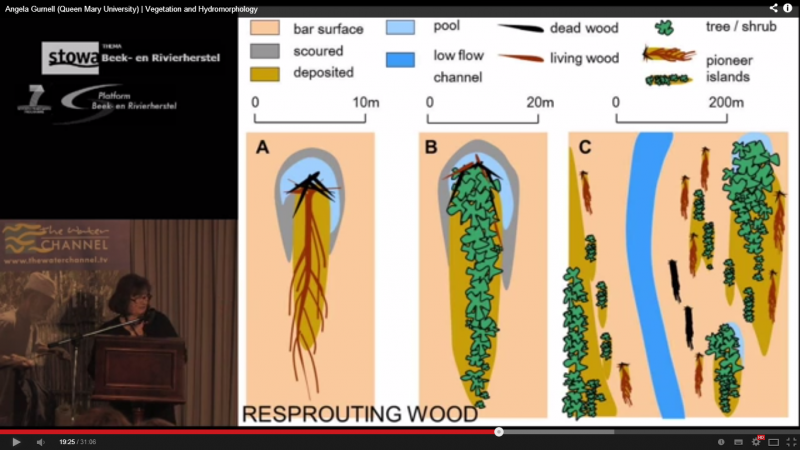Dear reader,
We are pleased to present the fourth REFORM newsletter, keeping you informed of the progress in our project and of other connected developments. Of course, we always appreciate it when you forward our newsletter to interested colleagues.
First, I would like to draw your attention to REFORM’s first set of results. Presenting these first results is meant to help with the drafting of the second round of river basins management plans, which need to ready for consultation by the end of 2014 for the EU Water Framework Directive. When the REFORM proposal was submitted to the European Commission, we anticipated this and scheduled a substantial initial mid-term output. We invite you to consult this information and hope that it can support your work. Also, we would appreciate your feedback to know how these results were helpful. Of course, the results can also be used for other purposes. The following REFORM mid-term outputs are now available on our website:
- D1.1 Review on eco-hydromorphological methods
- D1.2 Review on pressure effects on hydromorphological variables and ecologically relevant processes
- D1.3 Review on ecological response to hydromorphological degradation and restoration
- D1.4 Inventory of river restoration measures: effects, costs, and benefits
- D2.3 Valuing the ecosystem services provided by European river corridors: an analytical framework
- D3.1 Impacts of hydromorphological degradation and disturbed sediment dynamics on ecological status
- D5.1 Measuring success of river restoration actions using end-points and benchmarking
- D6.1 Synthesis of interim results for practical application to support the compilation of the 2nd RBMPs
- D7.3 Summary report REFORM stakeholder workshop
In this issue of the REFORM newsletter, we interview Professor Gary Brierley (University of Auckland, New Zealand). Being British by birth, he now is actively fostering river conservation and restoration around the globe. He has an extensive track record to research river behaviour and to support decision-making in river management. Together with Kirstie Fryirs, he launched the River Styles Framework providing a physical template for river management by examining river character, behaviour, condition, and recovery potential. In the interview, he emphasizes making better use of available know-how. In many instances, we know what we want to do to restore rivers, but, too often, legislative, societal, or institutional impediments ‘get in the way’. Professor Brierley is a member of the Advisory Board of REFORM.

Remeandering of the River Bečva (Czech Republic) was caused by a major flood event in 1997, and the meanders are still present today. Photo: Tom Buijse.
The next item in our newsletter addresses the new work programme of the WFD’s Common Implementation Strategy. For over a decade, the CIS has supported EU Members States with the implementation of the WFD. The Member States decide on the topics to be addressed by the CIS. The new programme continues its focus on hydromorphology and includes new topics on environmental flows and the programmes of measures to improve ecological status.
“If the mountain can't come to Muhammad …” REFORM also organises several regional events, in addition to EU-wide events such as the stakeholder workshop, which took place in February 2013 in Brussels. The first regional event took place in Zutphen (the Netherlands) in November 2013. In Zutphen, Dutch water managers, consultants, and other river restoration practitioners discussed the initial results of REFORM, as well as the achievements in the Rhine Basin and the UK River Restoration Centre. Since water managers, consultants and other river restoration practitioners quite often do not have the opportunity to attend international scientific conferences and learn about the state–of-the–art in river restoration, the regional workshop brought several renowned experts to the Netherlands, which was very much appreciated. For those who could not attend the workshop, the presentations were recorded and can be viewed on YouTube.

All presentations from REFORM’s first regional workshop in November 2013 are available on YouTube. The presentations introduce some of the project’s key initial results.
A major event regarding river restoration in Europe in 2013 was the fifth European River Restoration Conference in Vienna last September. The conference launched the contest for the first European River Prize, which was awarded to the International Commission for Protection of the Rhine. The event also marked the end of the successful LIFE+ RESTORE project that boosted communication on river restoration in Europe over the last three years. At the conference, REFORM was offered the opportunity to present its initial results to a wide audience of stakeholders.
As always, our newsletter highlights one of our river restoration case studies. This time, we feature the River Vääräjoki in Finland, which was channelized for flood protection and to facilitate the transport of trees (“log driving”). Over 16 km of the Vääräjoki have now been restored, and there are plans to restore over 80 km in total. This case study demonstrates that restoration can be highly appreciated by the local community. It also shows how other pressures, such as diffuse pollution by nutrients, pose a complicated yet important hurdle to overcome to further improve the ecological status of rivers.
We hope that you enjoy reading our newsletter. If you have comments or questions, please contact us. At the same time, we invite you to share your river restoration contributions with us. We would be happy to offer our website or future newsletters to announce an event or present a relevant study or report.
On behalf of the REFORM team,
Tom Buijse
REFORM Coordinator
p.s. If you do not yet automatically receive our newsletter and are interested, then please visit and subscribe on our home page (www.reformrivers.eu).
